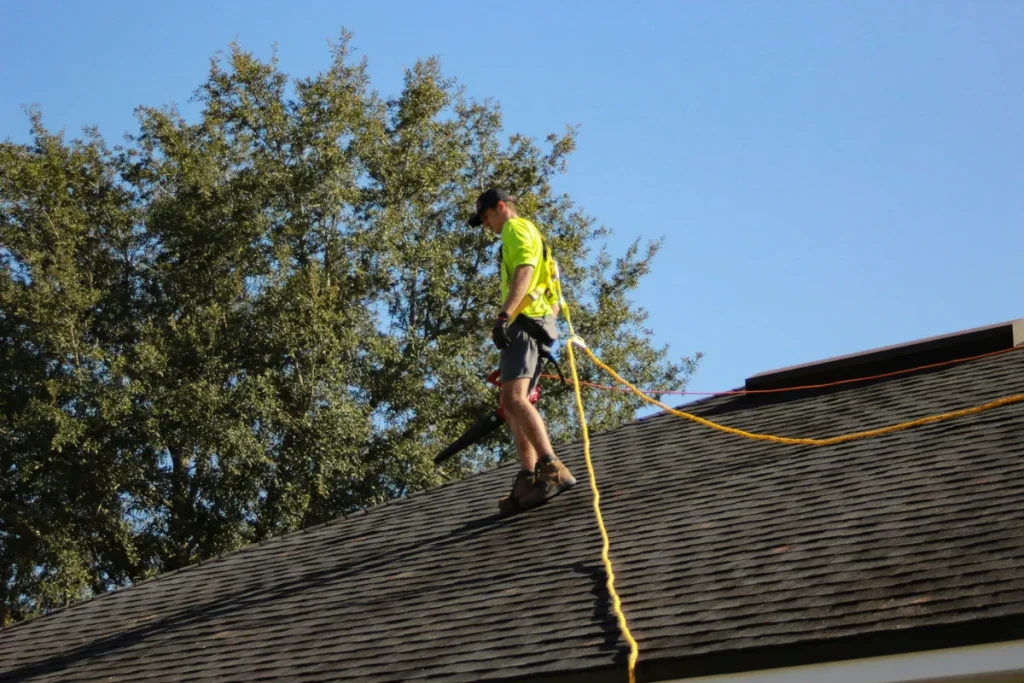
More than just a protective cover, a roof is a necessary component of structural integrity, energy economy, and the lifetime of a building. The correct roofing material will help a property to withstand harsh weather, resist wear over time, and maintain its visual attractiveness. Choosing the most durable material guarantees long-term performance and low maintenance given the several possibilities. Knowing the advantages of various roofing materials, whether for a residential or commercial building, aids in making a well-informed decision that ensures dependability and long-term value.
The Resilience of Metal Roofing
For both homes and businesses, metal roofing is among the most robust and long-lasting options available. Metal roofs are well-known for their durability and ability to withstand severe weather conditions, including fire, strong winds, and torrential rain. Aluminum, steel, copper, and zinc have different degrees of durability; some, when maintained correctly, endure over 50 years. The primary advantage of metal roofing is its energy economy. Reflective coatings cut energy expenditures by reducing heat absorption, so keeping buildings cooler. Because metal roofs resist mold, mildew, and rot, they also demand less upkeep. Their capacity to effectively shed rain and snow also helps to minimize water damage. Although the initial cost could be more than some other options, metal roofing is a wise investment for any property, given long-term savings in repairs and energy efficiency.
The Strength and Elegance of Slate Roofing
Because of its classic beauty and great durability, slate roofing is often associated with luxury residences and historic structures. Slate tiles are made from natural stone and provide unmatched impact, moisture, and fire resistance. Among the longest-lasting roofing materials available, a correctly constructed slate roof can last more than a century. Apart from its lifetime, slate has a unique visual appeal. Every roof looks different depending on the inherent variances in color and texture. For areas prone to significant snowfall or strong winds, slate also provides exceptional weather resilience. However, because of its weight, a building’s structure must be reinforced to bear the load. Longevity and preventability of breakage depend on professional installation.
The Endurance of Concrete and Clay Tiles
Concrete and clay tiles have been used in roofing for centuries, providing both durability and a unique aesthetic appeal. These materials resist intense heat, heavy rain, and strong winds without degrading; hence, they shine in areas with extreme temperatures. Usually lasting 50 to 100 years, properly maintained tile roofs are a consistent long-term solution. Among the main advantages of tile roofing is its resistance to rot, insects, and fire. Concrete’s and clay’s dense compositions prevent moisture absorption, lowering the possibility of structural damage or mold development. Tile roofs also offer superior insulation, which lowers indoor temperatures and boosts energy efficiency. Although tiles are heavier than other materials and call for reinforced roofing systems, their low maintenance requirements and longevity make them a wise investment for businesses as well as homes.
The Reliability of Modified Bitumen and TPO Roofing
Modified bitumen and thermoplastic polyolefin (TPO) roofing offer affordable and lasting solutions for commercial buildings. These materials are meant to resist constant UV radiation, strong foot traffic, and bad weather. For flat or low-slope roofs, modified bitumen is a great option since reinforced asphalt layers give impact resistance and flexibility. On the other hand, TPO roofing is a single-ply membrane offering exceptional energy economy and waterproofing. In warm climates, it radiates heat, therefore lowering cooling expenses; its robust seams stop leaks and moisture absorption. Companies seeking a long-lasting, low-maintenance roofing system can turn to specialized services, finding a professional Austin roofing company, or one in your area can guarantee correct installation and optimal performance. These commercial roofing choices, with a 20 to 30-year lifespan, minimize maintenance expenses and offer outstanding weather protection.
The Versatility of Asphalt Shingles
Because they are reasonably priced and flexible, asphalt shingles remain among the most often used roofing materials. When installed and maintained correctly, high-quality asphalt shingles offer remarkable durability, even though they might not last as long as slate or metal. Often lasting 25 to 40 years, architectural shingles especially offer increased resilience to wind, rain, and damage. Advanced technologies in modern asphalt shingles help to increase weather resistance and lifetime. While some are built for exceptional wind resistance, others have reflecting coatings that improve energy efficiency. Their lightweight design makes installation simple, and they come in a wide range of colors and styles to match different architectural preferences.
Conclusion
Choosing a strong roofing material guarantees structural integrity and long-term protection for companies and residences alike. Every choice—the resilience of metal, elegance of slate, endurance of tile, dependability of commercial roofing membranes, or flexibility of asphalt shingles—offers unique advantages. Investing in the right material ensures that a roof can withstand harsh conditions, requires little maintenance, and increases the overall value of a property. Making an informed decision ensures that your roof will not only last but also improve energy efficiency and curb appeal.

